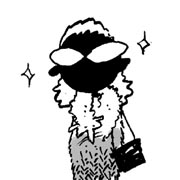Looking for the new “ladies of leisure”

In Korea, it is not clear when the word “lady of leisure” was first used. In 1935, when Korea was under Japanese occupation, Samcheolli magazine reported on the opening of the modern Hwasin Department Store, which was built on the spot where the Chongno Tower now stands: “Many people in Seoul, ranging from ladies and ‘ladies of leisure’ to wealthy people without jobs, gathered like clouds.” Although it was a common moniker, it seems that it was not synonymous with self-indulgence and vanity.
The label underwent a significant change after Korea was liberated from Japan. In the short story, “Two Bankruptcies,” novelist Yeom Sang-seop (1897-1963) wrote: “Her appearance was that of a ‘lady of leisure’ of a rich man, as she had her hair curled nicely, wore light makeup and held a shiny U.S.-made handbag tightly under her arm.” Novelist Chung Bi-seok (1911-1991) later wrote in his novel, “Madame Freedom,” that “a modern woman who wears new dresses, smokes cigarettes and enjoys dancing at a ball” was a lady of leisure.
Even after that, the negative image of the “lady of leisure” did not change. In a Dec. 20, 1969, article titled, “22 gamblers including a lady of leisure arrested,” the JoongAng Ilbo reported that a “lady of leisure is intelligent in general and belongs to the upper-middle class.” At that time, headlines such as: “Jewelry smuggling ring including a lady of leisure arrested” or “Robbers disguised as ladies of leisure lure drunkards” were common. In the 1980s and 1990s when the fever of real estate development swept the Gangnam area, the lady of leisure became a “lady of fortune.” And what will our lady of leisure look like in the 21st century?
Kim Sung-joo, chairwoman of Sungjoo D&D, recently provided a clue when she said, “I have a sinking feeling when I see high-class women gathering at luxury restaurants in the morning, idling away their day chatting and pondering where to go to shop and have fun.” It’s obvious that these women, no matter how well educated, think nothing of patronizing luxury restaurants and spending time shopping.
But I look forward to seeing the arrival of a new kind of lady of leisure - one who devotes her spare time to the development of society.
*The writer is an editorial writer of the JoongAng Ilbo.
By Ko Dae-hoon










with the Korea JoongAng Daily
To write comments, please log in to one of the accounts.
Standards Board Policy (0/250자)